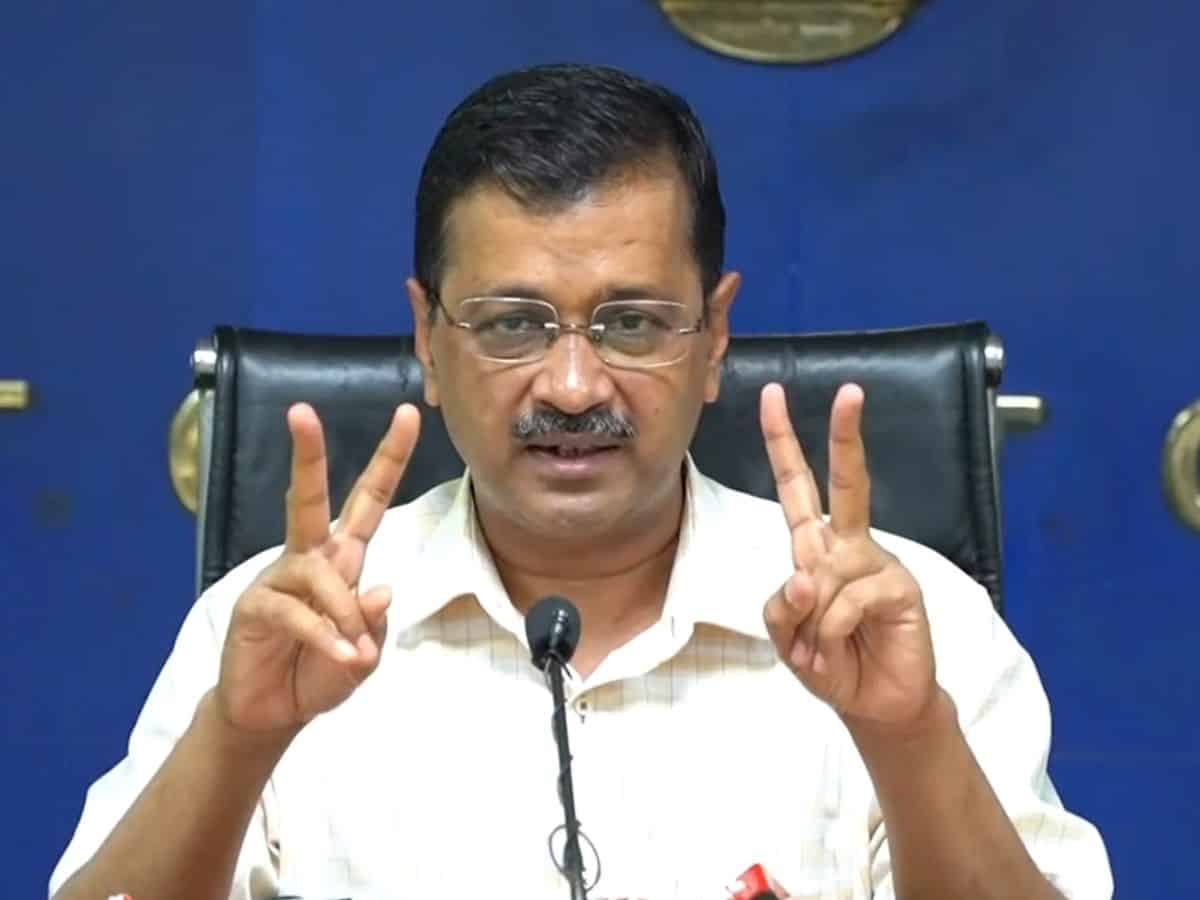
New Delhi: No flood-like situation exists in the national capital as the water level in the Yamuna is below the danger level, despite the release of three lakh cusecs (cubic feet per second) of water from the Hathnikund Barrage, Delhi Chief Minister Arvind Kejriwal said here on Monday.
Even if such a situation were to occur, the Delhi government was prepared to handle it, he said and called for cooperation among nearby state governments and all party leaders during this challenging time.
“This is not the time to point fingers at each other. I believe that all state governments in Northern India are working to help their people. All parties and governments should work together to provide relief to the people. I would like to express my gratitude to MLAs, councillors, and ministers from all parties who were on the ground in Delhi during this rainy season, providing relief to the people,” the chief minister said.
He further said that this time the problem was significant, and all efforts seemed insufficient. During the 24 hours of July 8 and 9, the capital witnessed 153 mm of rain, breaking a 40-year record.
The drainage system in Delhi was not equipped to handle such heavy rainfall.
“In the past three to four years, the city experienced a maximum of 100 mm of rain, and waterlogging areas were cleared within one-and-a half hours. But 153 mm of rain is unprecedented and has caused significant problems for the citizens. People are wondering if Delhi is about to face a flood. There are two factors: the amount of rain in Delhi and the water released from the HathniKund Barrage by Haryana, which can lead to a flood-like situation. Water from Himachal Pradesh comes into the HathniKund Barrage,” Kejriwal said.
He further said that in 1978, Delhi witnessed a flood when 7 lakh cusecs of water was released from the HathniKund Barrage, causing the Yamuna river level to cross 207.49 meters at the old bridge.
In 2013, 8 lakh cusecs of water was released from the HathniKund Barrage, and the Yamuna level reached 207.32 mm, but it did not result in a flood.
In 2019, 8.28 lakh cusecs of water was released from the HathniKund Barrage, and the river level reached 206.6 mm, again without causing a flood.
On July 9, 45,000 cusecs of water was released from the HathniKund Barrage into the Yamuna.
Later that night, an additional three lakh cusecs of water was released, and since this morning, around 2.5 lakh cusecs more has been released.
Kejriwal stated that his government was in constant touch with the Central Water Commission (CWC), and according to their assessment, the current water level in the river is 203.58 meters, which will rise to 205.5 meters by tomorrow morning.
According to weather predictions, the water level in the Yamuna will not increase further.
“Experts say that there will not be any flood-like situations. However, we are prepared if it does happen. If the water level rises to 206 meters, we will initiate evacuation. We have identified 41,000 people living in the nearby areas of the Yamuna riverbank, and we have established relief camps for them,” Kejriwal said.
He mentioned that 680 pumps from the Public Works Department (PWD) were functioning to remove water from affected areas.
Additionally, 326 temporary pumps have been set up to address waterlogging.
Apart from these, the Delhi government is utilizing 100 mobile pumps to reach different areas.
“There is a possibility that the rain may have caused potholes in certain areas. We cannot repair them at the moment because they would break again. However, we can fill them with stones to prevent accidents. We have instructed the Municipal Corporation of Delhi (MCD) and the PWD to fill all potholes with stones. At all construction sites, we have ordered the opening of all drains and sewers,” Kejriwal informed.
He revealed that the New Delhi Municipal Council (NDMC) area, which is a highly important area, was also severely affected by the rains. Therefore, he has directed the NDMC to study the situation and create a special plan to prevent such occurrences in the future.
Kejriwal announced that he has ordered an inquiry into three incidents of road cave-in that occurred during the rain.
